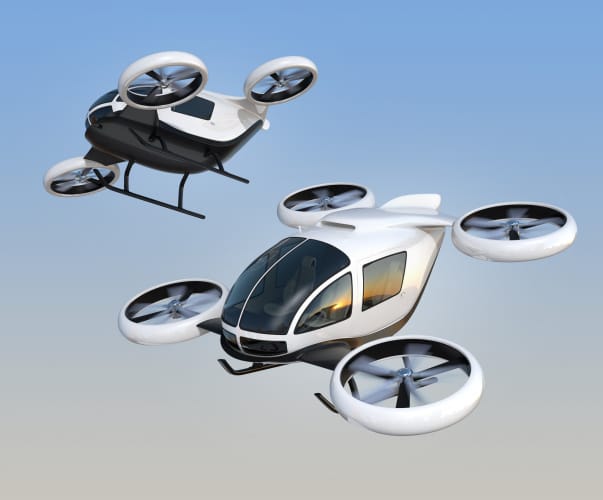 Ian Risk, Chief Technology Officer at the Centre for Modelling & Simulation (CFMS), discusses why the UK needs to adopt high value design (HVD) capabilities urgently to avoid losing out to global competitors.
Ian Risk, Chief Technology Officer at the Centre for Modelling & Simulation (CFMS), discusses why the UK needs to adopt high value design (HVD) capabilities urgently to avoid losing out to global competitors.
In order to address the challenges of an environment that is rapidly evolving in terms of technology and business practice, the UK Government established an Industrial Strategy in 2017 with the prime objective to improve national productivity.
So far, government-sponsored initiatives that this policy initiated, such as Made Smarter, have focused on the importance of industrial digitalisation for manufacturing and the impact this will have on our economy. Whilst the importance of this is clear, it loses sight of the fact that first and foremost, to successfully develop new products, businesses need to perform engineering design. Without this, nothing of any consequence can be manufactured: it is an essential element to secure a stable and resilient industrial base and needs to be the primary requirement of any industrial strategy.

As should be apparent from recent industrial events, the proximity of design to manufacturing operations is a key determinant of operational activity for global companies, especially in times of major technological change. The design process develops the characteristics, quality and performance of the product which in turn creates customer interest and establishes a brand.
High quality design provides the intellectual capital on which a product is based and differentiates it in the marketplace, helping to define purchasing behaviour. In the modern era this is not just about performance. The impact on our environment is more important and the ethics of a product can determine its commercial success - and this all starts with design. In terms of industrial operations, it also has a major influence on the type of manufacturing process required and the capabilities needed to realise a viable product that meets customer requirements (e.g. a shift from metallics to composites).
Research has identified huge commercial benefits from the adoption of design as an integral part of company strategy. Organisations that use design engineering out perform their counterparts by more than 200 per cent over a ten-year period and evidence shows that every £1 invested in design generates a return of £20 in revenue and £5 of exports.

autonomous electric passenger drones
These developments in digital technology are creating new business models that illustrate this changing environment. An increasing number of manufacturers are now focusing on selling services or capability rather than just simply a product (so-called servitisation).
Design is therefore no longer just about initial form and function. Instead it must consider and demonstrate the through-life capability, cost and reliability of the product. This means more needs to be known about the product before it is built.
With continually reduced lifecycles and increasing costs of physical prototyping, this can now only be done virtually and so simulation and design tools are critical. In most cases, these are developed and refined over many years to ensure their validity and reliability.
Increasingly, operational data is critical to this process as it can provide insight into how products are used in practice and how a design needs to evolve or improve. This changes the nature of the relationship between vendor and customer, where the latter will play an increasingly more important role in product development.
Irrespective of the market, the evolution of products has been shown to follow a similar pattern, whereby disruptions in the market occur sporadically as new technologies are adopted to enhance performance and offer customers improved capability. The speed at which these technological changes are now happening is unprecedented, creating huge opportunities for agile companies that can adapt but extremely destructive for those unable to match customer expectations.
Industrial agility is dependent on a business’s ability to create, develop and test new products at the speed demanded by the market. For today’s world, this means that the design culture, tools and methodologies must evolve at the same pace as the digital sector to maximise the potential of new technology.
Within advanced sectors such as aerospace, design methods for each new market ‘disruption’ have historically been refined over approximately a thirty-year period to progressively improve product performance. In the modern era, this timeframe simply does not exist. Additive Manufacturing (AM) is a prime example of this phenomenon, in which years of traditional design and manufacturing experience are no longer valid. Companies preparing for this market development will be well placed to exploit AM to the full and those who aren’t will most likely fail.
Engineering services are strategically important to the UK with a domestic market worth between £30-40 billion annually and a global market approaching at least £1,000 billion by 2025. The UK only has a five per cent share of this and design is the key to unlocking this opportunity. Design is the phase of the product lifecycle that has most influence over cost. By controlling this, manufacturers can exert stronger influence over the value chain and procurement policy for the product.
Major national investments, such as the new Tempest aircraft for the MoD could be worth in the region of £20 billion for the West of England economy, however with current design methods alone the question is whether developers will be able to realise a viable, cost-effective solution.
This evolution in design methods is necessary to keep pace with technological advances such as the availability of improved power/weight electrical power sources, or regulatory changes such as emissions targets. The breadth of development and the costs associated with this is beyond the potential scope of any one organisation. Effective partnerships between industry, academia and government are necessary to maintain a leading edge in design capability and economic security. For these reasons, CFMS continues to reach out nationally and regionally to those organisations that can work with us to push forward the boundaries of design.
For those that can influence the debate, design creates, design evolves, design pays and design matters.
Ian Risk is Chief Technology Officer (CTO) at CFMS, responsible for evolving the company's technical vision and leading all aspects of technology development according to its strategic direction and growth objectives. Previously, he was Head of Airbus Group Innovations UK, responsible for the UK corporate research capability, developing technical strategy, business development and initiating industrial and academic partnerships.




Swiss geoengineering start-up targets methane removal
No mention whatsoever about the effect of increased methane levels/iron chloride in the ocean on the pH and chemical properties of the ocean - are we...